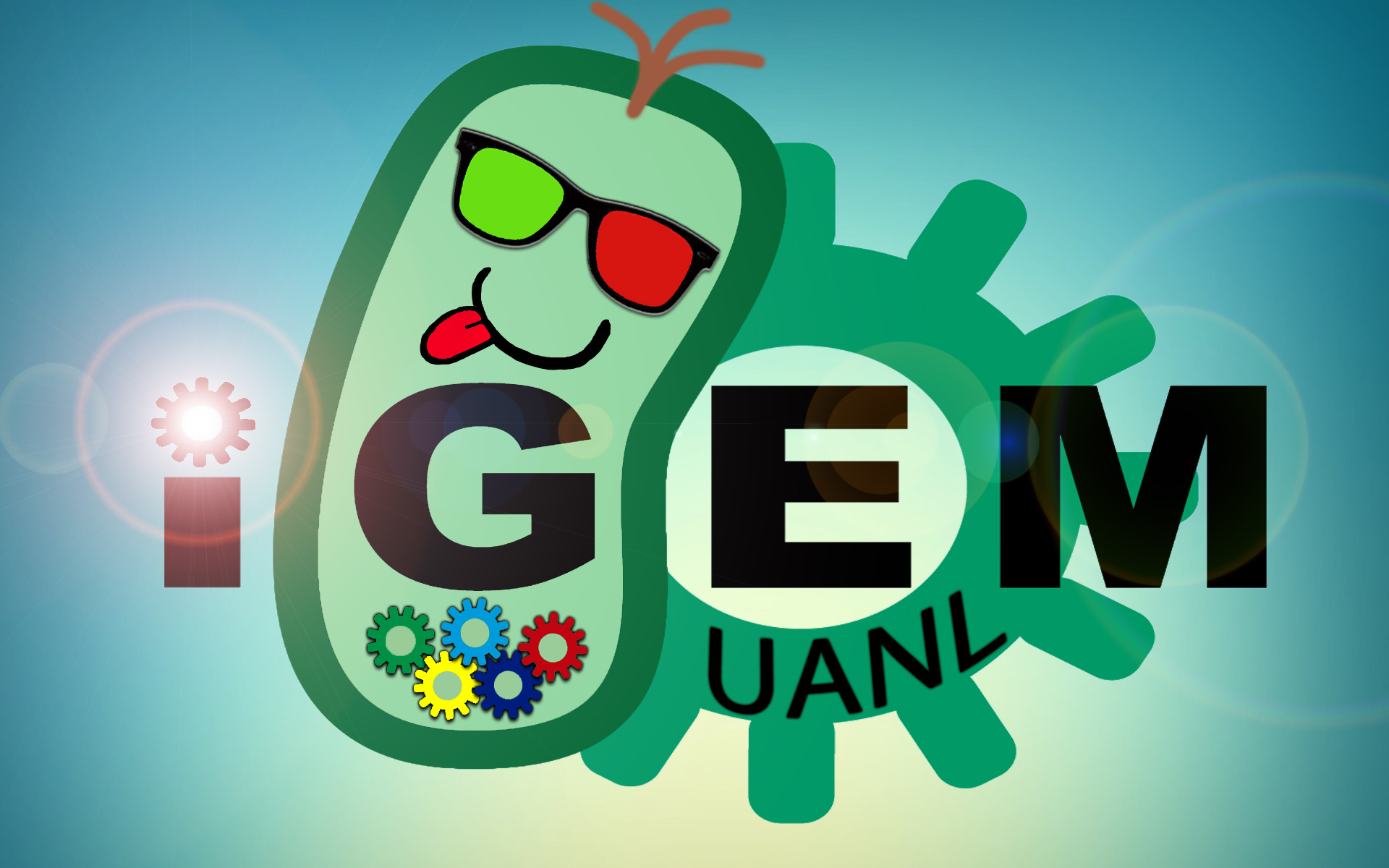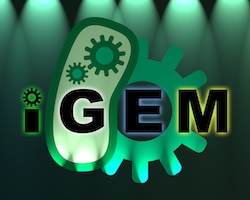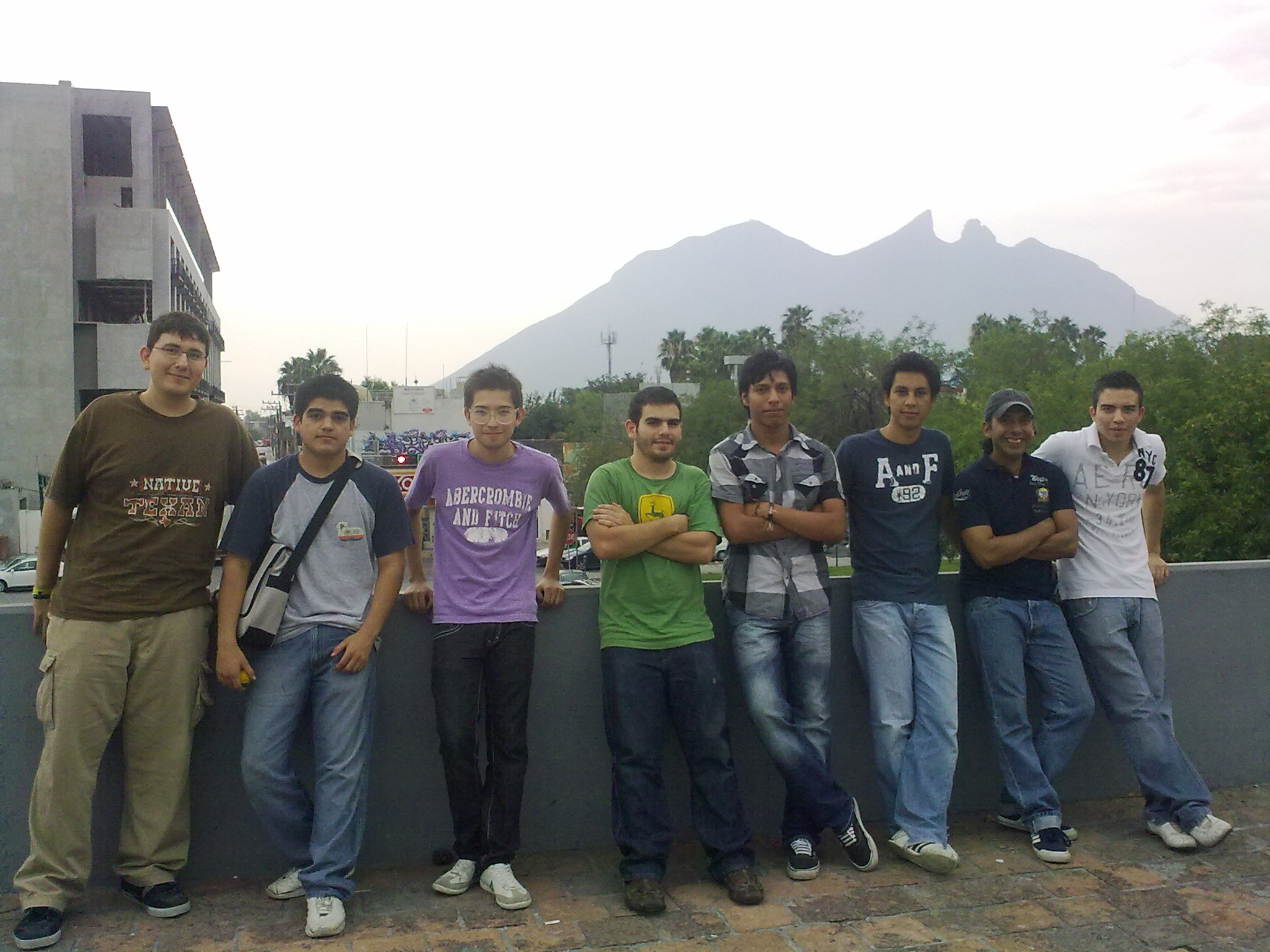Team:UANL Mty-Mexico
From 2011.igem.org
| Line 1: | Line 1: | ||
| + | {{:Team:UANL_Mty-Mexico/Templates/Header}} | ||
<html> | <html> | ||
Revision as of 18:49, 25 July 2011
Follow @iGEMUANL
Project description
Information processing through living things remains a challenge to science. Logic-gate based genetic circuits to program bacteria have been constructed, allowing the achievement of more complex answers.1 This represents an incredible advance from previous systems that require one input for every output seeking to control.
The main purpose of our project is to achieve a new way for regulating gene expression through logic gates that globally perform a complex answer. It aims at building a genetic circuit that enables a bacterial community to interpret a simple light-based code. The community will be constituted by different E. coli clones that communicate with each other and overall interpret the code. We consider this an advantageous approach since compartmentalizing the circuit lowers the construction size and metabolic charge per cell. Different genotypes in each clone will give them the capability to take green or red light as gene-expression stimulating input. We pursue to control the independent expression of five different products by using wavelength light patterns.
Although the concept does not depend on the type of input, light will be a plus to our project as it is an elegant non-invasive way to input a genetic circuit. To our knowledge, every logic-gate based genetic circuit constructed so far uses chemical inputs.1 Nevertheless, light sensing proteins have been successfully characterized in the last few years;2, 3 therefore, we think there is a great potential on combining both types of devices into genetic circuits that take light as input.
iGEM Lighters Community
As a social focus of our project, we are making an effort to create a community of all the iGEM teams working with light induction systems. To date, we have established contact with teams from Rutgers, Minnesota and Freigburg. We hope this to keep growing.
In order to make communication and cooperation between teams easier, we created a Facebook group. It was called iGEM Lighters, and by this media we invite all the "light-teams" to join us. Here is the link: https://www.facebook.com/groups/164426413628518 We really hope you to be a part of it.
We believe this could be a great way of collaboration, as well as a good example to others teams that may inspire them to create networks with common objectives. The same way, this can be an opportunity for us to be known by researchers that could help us out with some of our doubts and problems; such as Dr. Jeff Tabor (well known by most of you, pioneer on this matters), who is already aware there are several teams working with light induction and has always been pleased to help us.
Safety
Would any of your project ideas raise safety issues in terms of researcher safety, public safety, or environmental safety?
Our project does not raise any safety issues, we are working with E. coli strains that are specifically weakened for laboratory use.
In this project we mostly work with BioBricks, and we are following iGEM-HQ recommendations in order to prevent any risk.
Nevertheless, we take some safety precautions while working with especial situations:
- While using ethidium bromide to stain DNA, we have a reserved area to do this, it is well indicated and we use the proper protection to handle this material.
- While observing a stained gel of DNA with UV-light, we use especial protection for the eyes.
- While managing electric circuits, we always use the appropriate tool and take especial cares to prevent any accident.
We do not consider our project represents any safety risk for the public. As we mentioned above, we are working with weakened E. coli strains and what we are constructing with BioBricks is not a dangerous application of them. And, to mention, these constructions we are doing do not represent risk for healthy on any human.
In addition, we would like to say our project aims to finally produce non-harmful proteins that does not represent any risk not even in cases of horizontal transfer, therefore it doesn't compromise at environmental safety level.
Do any of the new BioBrick parts (or devices) that you made this year raise any safety issues?
Our project is mostly based in the use of BioBricks already listed in the Registry of Standard Biological Parts. Nevertheless, the BioBricks we are constructing do not represent any safety issues for public nor environment.
Is there a local biosafety group, committee, or review board at your institution? If yes, what does your local biosafety group think about your project?
Dr Lydia G Rivera Morales, in charge of biosafety matters at the School of Biology at UANL and certified by the Asociación Mexicana de Bioseguridad y Biocustodio (amexbio.org), approves our project on this area. She recommends to follow biosafety level 1 and 2 standard safety precautions, qualifying our project as not dangerous.
The team
References
- Tamsir A, Tabor JJ, Voigt CA. (2010). Robust multicellular computing using genetically encoded NOR gates and chemical ‘wires’. Nature. 469: 212-215.
- Levskaya A, et al. (2005). Synthetic 674 biology: engineering Escherichia coli to see light. Nature. 438: 441–442.
- Tabor JJ, Levskaya A, Voigt CA. (2010). Multichromatic Control of Gene Expression in Escherichia coli. J. Mol. Biol. 405: 315-324.
 "
"


